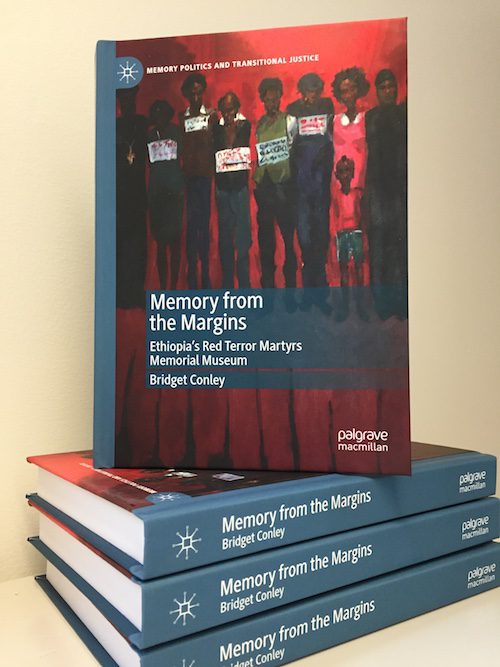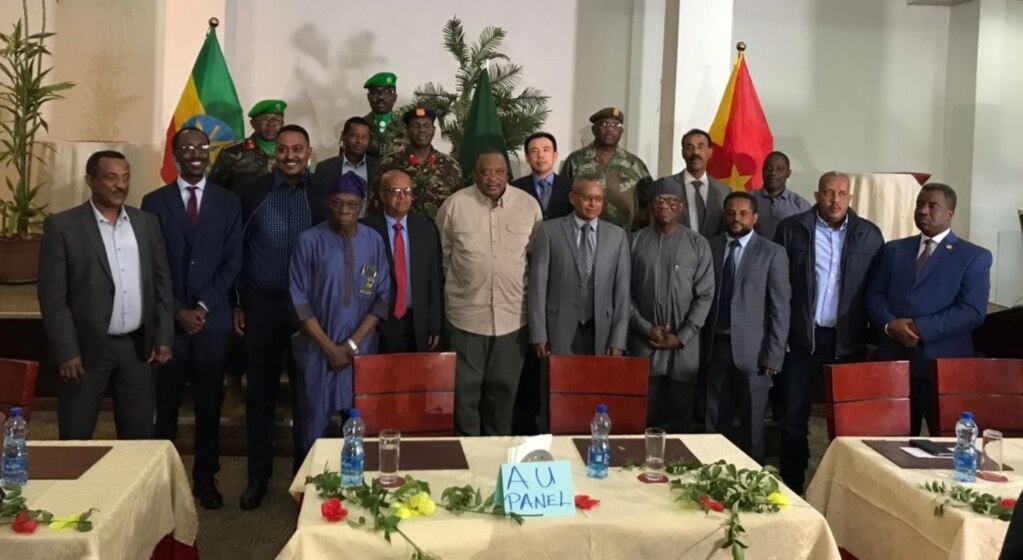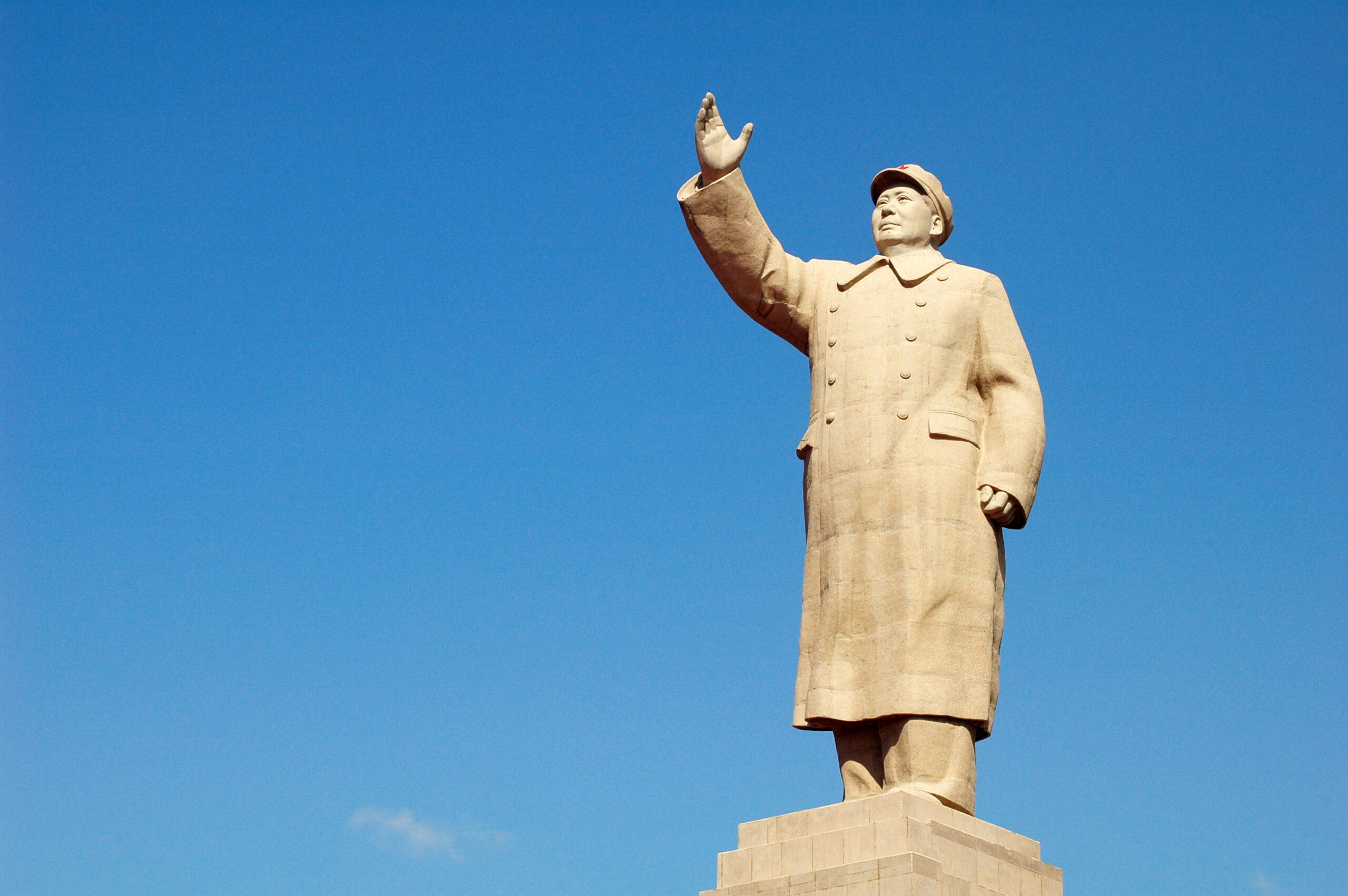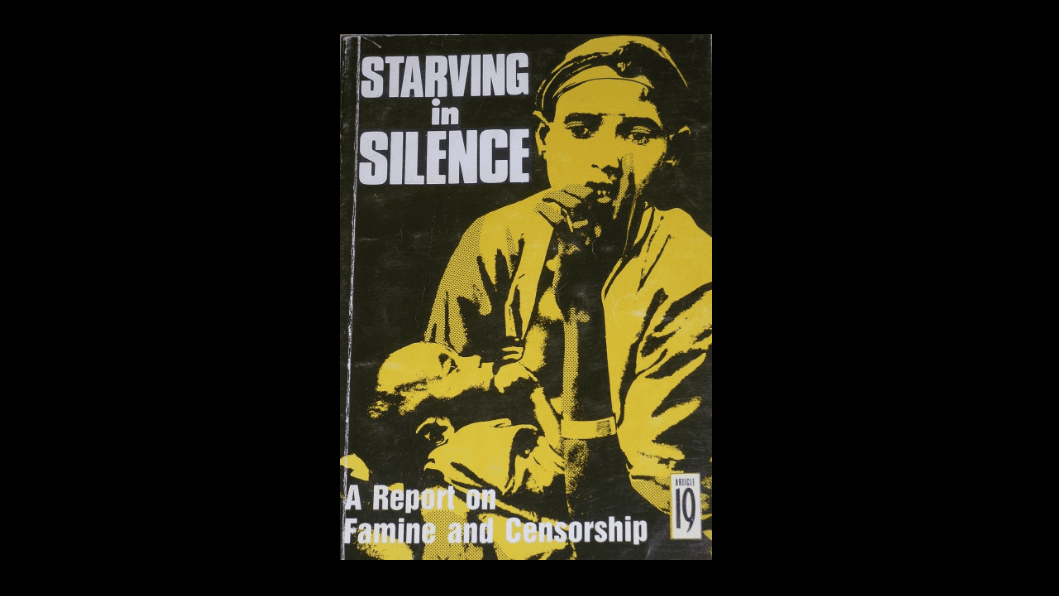This is the third of a three part series introducing my new book Memory from the Margins: Ethiopia’s Red Terror Martyrs Memorial Museum (Palgrave 2019). Previously I discussed some of the theoretical framework that informs the study. In this essay, I provide an overview of the how the study of the Red Terror Martyrs Memorial Museum fits into a larger Ethiopian memorial landscape and what it might tell us about Ethiopian politics. I am not an expert on Ethiopian history or politics; my view unto it is through the prism of memorialization. On this site, I previously wrote about several of Ethiopia’s memorial museums, and the prospect that the changes the country is currently undergoing might introduce a new prison memorial museum. This work is expanded upon in the book.
The book provides an overview of the period of the Red Terror (1976 – 1978), drawing on research by scholars and a memoir, Hiwot Teffera’s Tower in the Sky (Addis Ababa University Press 2012). Her work marries a deeply personal story of falling in love with a fellow political activist, to the experience of radical politics. Her memoir illuminates one of the most difficult questions one faces in considering memorialization: it is impossible to convey the actual experience of ‘being there’ to anyone who has not ‘been there.’ The elusive character of political passion came through in all of my interviews with survivors and in other accounts of the historical period. From my chapter on the Red Terror:
Teffera’s memoir captures how the idealism of the Ethiopian revolution carried with it all the passion—and some of the irrationality–of falling in love. The slogans of the day, “Land to the Tiller,” “Bread! For the Hungry,” “Democratic rights now” or “Down with feudalism,” (Teffera 2012, 71) echoed across voices in large-scale protests, and in small cells of committed actors, transforming simple words into powerful political incantation. Like the banal phrase, “I love you,” that builds the monuments of our private worlds, there is nothing new or profound in a political slogan. Rather, a slogan’s power, like a term of endearment, emanates from precisely how it is said, by whom, and in what situation.
As the enchantment of revolution gave way to the terrible losses of the Terror, young people across Addis–where the Terror is best documented–disappeared into mass graves, torture rooms and prison cells. Mourning those killed was criminalized. Not until 1991, when Mengistu was defeated could families search for the remains of their loved ones. The period of transition from military regime to the EPRDF government also included one of the most ambitious efforts to prosecute former regime perpetrators ever undertaken, yet it is almost never referenced in discussions of transitional justice. No doubt the shortcomings of the endeavor were many, but that does not make them less compelling to learn from. During the transitional period, which I extend to cover 1991 – 2005, when controversial elections were held, several factors emerged that later contributed to the possibility of a Red Terror memorial museum: the need to find a final resting place for human remains, the consecration of a simple memorial stone, the rise of a juridical narrative for understanding past political violence, efforts elsewhere in the country to memorialize the war effort against Mengistu, and the commitment of individual activists.
Spurred on by multiple factors, including the country’s narrowing space for democratic politics, red terror memorialization activists debated the form, content and institutional structure of the museum that they sought to construct. This part of the story is based on interviews with many of the key actors involved in the process of creating the Museum. In the end, the exhibition narrative simplifies the history, but the debates left a mark on the Museum, adding footholds for complexity in how visitors encounter the history presented. Careful design of the exhibition by a collective of artists and the building by Addis-based architect Fasil, create a compelling experience for visitors. Here is an excerpt describing how the Museum appears in its urban context:
Standing on any corner of Meskel Square, one would be forgiven for at first not noticing the humble building Fasil designed for the RTMMM. But looking twice, one sees the bold modernist lines of its structure. The building is situated on a slight decline, paralleling a street that leads downwards into the massive, open space of Meskel Square. The Museum is housed in the upper portion in an angular, large charcoal grey structure that appears to be falling unto the lower structures, composed of several small, zig-zagged sand-grey stone shops. The stone of the shop buildings mirrors a wall behind the Museum, blending into the scene. The Museum structure, however, collides into the lower portion and juts towards the sky as a harsh angular scar. Hence, the structure itself is torn in two; it both reflects its surroundings and is distinct from them, like the history itself. It folds into its site, even as it poses an interruption. Unlike much of the city’s contemporary architecture, composed of anonymously modern glass office buildings, the RTMMM presents as a quiet, solemn structure, positioned between history and the present. The building begins to tell the story.
The last two chapters place the RTMMM into the context of evolving Ethiopian politics. A study of survivors-docents and visitors asks how memory is transferred and what ‘lessons’ about democracy do visitors appear extract from the Museum experience. The Museum is generally received by its public, but comments reveal a fractured public sensibility about the state of Ethiopian politics and the implications of state-sponsored violence, then and now. A final chapter situates the question of memorializing political violence into the country’s current turmoil, as it again faces enormous change and the question of how its many pasts will contribute to its future. From the conclusion:
The Red Terror is the story of an activist movement from the early days of the 1974 Revolution against the Imperial regime, when the military regime rose to power. The ‘success’ of the Terror, measured in terms of the military regime’s thoroughness of brutality, means that the legacy of this history does not belong to any of the country’s contemporary organized political actors: neither the EPRDF, nor any of the organized opposition, including the EPRP, whose membership suffered terribly during the violence. The history has no easily locatable status in today’s political turmoil. Some might argue that the Museum emerged out of the EPRDFs justification for their rule and hence, is tied to their political legacy. But the Red Terror is not the story of their rise to power, its history concerns political activism of a different character. More importantly, the RTMMM tells a story of the extremes of brutality that a state can achieve in order to silence alternate views. In this narrative, the RTMMM makes it signature contribution: the past provides testimony that the present was constructed through violence suppression of the alternate views. Recognizing the losses from the past re-opens a sense of indeterminism for the future; this can fuel instability, but it is also the grounds of possibility for yet another transition.




